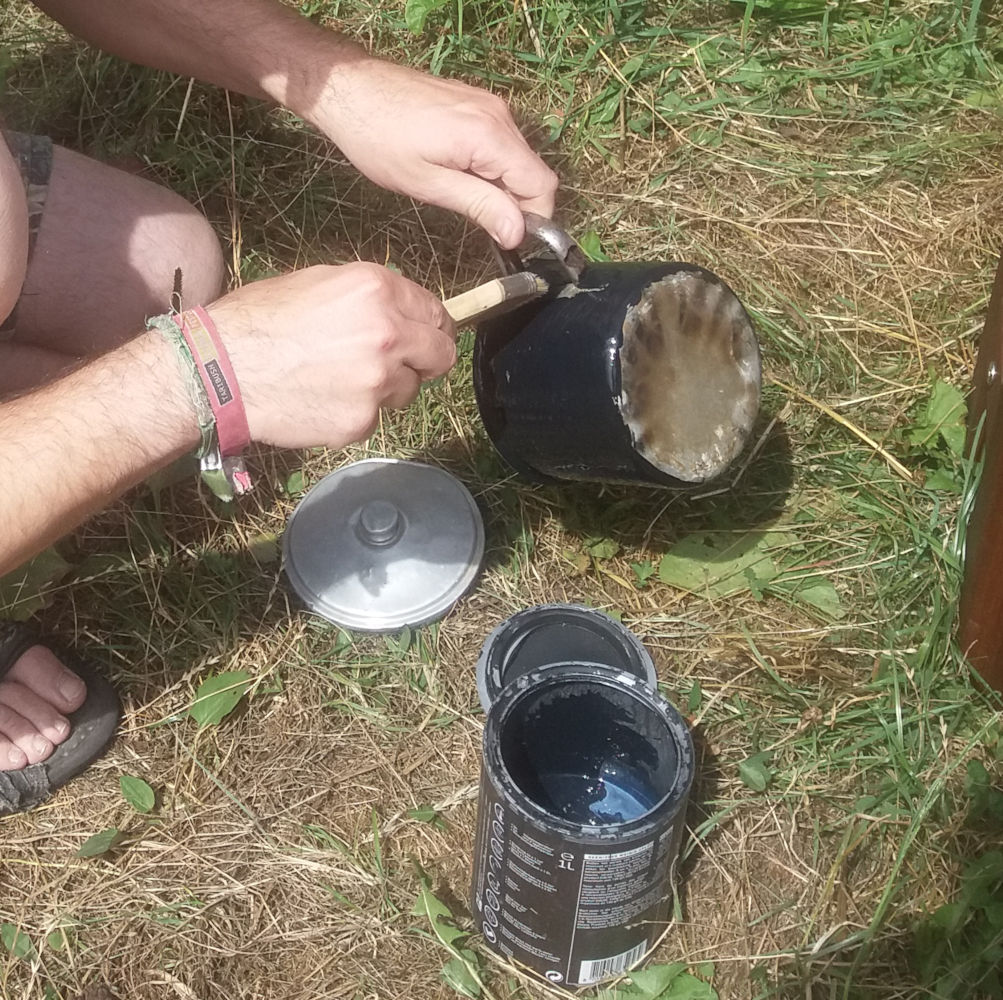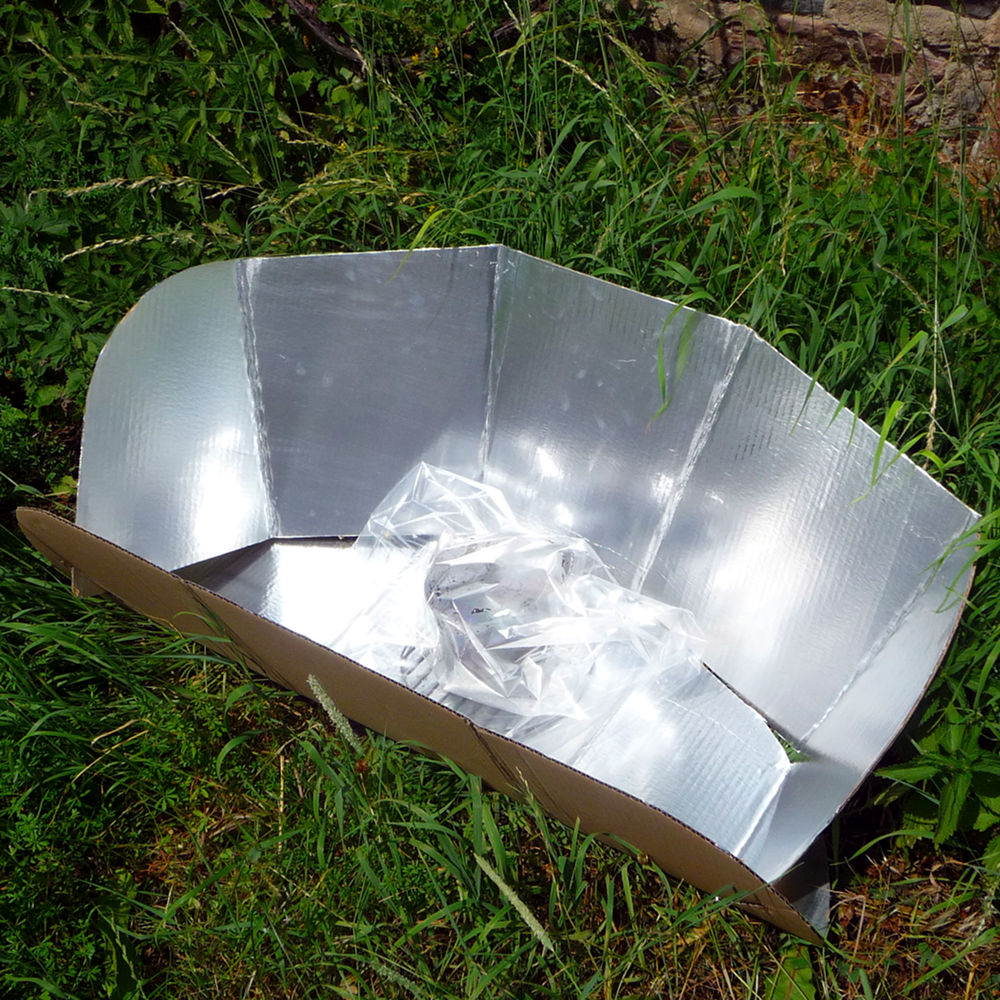Ecological cooking
Ecological cooking is a subordinate child in all ecological conversations. And rightly so, because heating a house costs by far the most energy nationally (including everything internationally, our stuff is number one). Yet in the course I get self-sufficient off-grid The question is often asked how you can cook as energy-efficiently and ecologically as possible. Hence the question: how can we cook as sustainably as possible? We are going to look at the cooking process and not the ingredients.
Concept 1: less cooking time
First of all, you can ensure that the warm-up time is shortened. An example: me and my girlfriend have done a search for the perfect soft eggs (for us that is: egg whites congealed, egg yolks not). We boil eggs and when it comes to a boil, we immediately turn off the fire completely. The question is: how long should the eggs remain in the pan so that the whites have set and the yolks are not? After years of testing, I know that it depends on how big the eggs are, how big and how thick the pan is, whether you cook with gas or electric, and how much water you add. When the water boils, you can immediately turn off the gas at our house and then scare the eggs 2 minutes 50 seconds later. In your kitchen that can also be 2.5 or 3 or 3.5 or 4.5 or 5 minutes. In any case, you don't have to let the eggs boil with the gas knob half open, that's not necessary.
Hooimadam
The pressure cooker (or pressure cooker) is also a way to reduce cooking time. You can also decide to always use a maximum of 2 pans (boiling and wok), but estimating in which order and when you can add ingredients has cost me about 10 years of my life.
A more rigorous approach is to eat mostly uncooked foods. This lifestyle needs quite a few adjustments, and is therefore probably not for everyone. I did this when I lived in my van / campervan. I have only replaced the gas bottle twice in 2 years, and that gas was used for cooking (once every 2 weeks) and for heating in the winter.
Concept 2: local heating
A second important concept is paying attention to where and which surface is heated. Preferably you do not heat everything, and preferably only very specifically. A negative example of this is a campfire outside: most of the heat will mainly go in all directions and only partly to the pan you hang above it. Below you can see the operation of an electric blanket that only heats your bed instead of the entire bedroom and thus produces a very warm bed within 20 minutes with extremely little energy (a total of 45 Wh). This only works because your blankets are excellent insulation.

The electric blanket control (45 Wh on position 3)
Another example is an infrared panel. I am not a fan of it because they are energy guzzlers and therefore very unsuitable as main heating. However, if, for example, you do not want to heat the entire bathroom and only where the panel is hanging is enough, an infrared panel saves you the complete heating of the entire bathroom.

Infrared panel (281 Wh consumption)
It can be useful when cooking to place your ingredients as close to the heat as possible, preferably in an insulated room such as at the hay madam. In the cooking stove below you can remove the rings and then leave my grandmother's brown water kettle partially hanging in the fire. You can imagine that this makes a huge difference in cooking time!

The bottom of this water pan hangs in the fire; the rings can come off the stove
Let's take a look at how these two concepts can help us.Gas
We must (and we will) get off gas - at least if we want a livable planet for our children. Can you possibly capture enough gas that is released during the composting process of food waste? There are various commercial and DIY low-tech solutions for collecting biogas. Unfortunately, you need food scraps from all over your neighborhood to be able to cook for your household alone. Secondly, you need a very high ambient temperature for that, so this is nice for the summer in the south of France and all year round at the equator, but not suitable for our climate.

Homebiogas is a ready-made biogas system, which is not really usable in our climate.
Although gas provides the greatest cooking convenience, it is not the cooking fuel of the future.Wood
Cooking with wood maybe? Unfortunately, more wood is still burned worldwide than is growing annually, so an occasional campfire "yes", but burning wood on a large scale daily for cooking does not seem to me to be a permanent solution. Every year an amount of forest the size of Greece disappears worldwide, and 4 million people die every year cooking indoors with wood and coal. Wood only seems suitable to me if it is also used for the long term (such as skeleton construction and insulation material), because it is only then really CO2 capture (and then an ecosystem is still not happy with trees disappearing).
As I explain extensively in my course day Self-sufficient Off-grid, there is another problem with wood (and gas). Namely: most of the heat is not in the flames but in the smoke! That heat disappears with that campfire and also with every regular gas stove simply in the air and not in your food. Only rocket mass heaters still do something with warm smoke, for example by also guiding this smoke through a mud bank.
In the photo below you can see my DIY rocketstoves with two Kelly Kettles on them. The Kelly Kettles are hollow on the inside, and the water reservoir is located in the outer rim. The smoke from these extremely efficient heaters is therefore used to heat the water. As you can see the flames go all the way through if I put extra wood in it. Although this is great fun when you are camping, it is unsuitable for everyday use in terms of ease of use.

Do it yourself rocketstove: in total less than one block of wood is needed for 3 days for 20 people to heat coffee, tea and hot food.
Sun
You guessed it: eventually we end up at the sun. In summer, the heat from the sun can be used directly. You can tell from this small solar lighter that works great in the summer months.

Solar lighter
Anyway, for coffee and tea you can also use a (regular heatpipe-based) solar water heater system from the beginning of May to the end of September. See below a picture of the delta regulator in September. I then directly tapped water at 94 degrees from my solar water heating system for tea and coffee. I don't spend any gas or wood for that.

The solar water heater delta controller in mid-September (adjusted to a maximum of 94 degrees).
You can use a solar cooker to cook with the sun in the summer. There are various types: a closed box, a solar water heater tube or a reflective screen. You can certainly make them yourself.
I tested a reflective screen type by buying the Cookit; this is only 10 euros, but please donate a multiple of that because it goes to a good cause. After painting a pre-war pan black, the test could begin. And sure enough: within an hour I had boiling water (in April)!
First paint a pan black with an old scrap of chalkboard paint.

The Cookit at work. The black pan is in a plastic bag.
The more modern and more expensive variants are the solar water heater tube type. These work with the same principle as a solar water heater system: a thick vacuum glass tube. It's getting hot inside. Below you see the Gosun "Fusion" type, a new variant that can be used with the sun and electrically. It can hold a lot of food, up to 3 people, and guess what: after one to one and a half hours (in August) you have horribly delicious food. In the autumn it will take at least two to three hours before your food is cooked. As with cooking with a maximum of 2 pans, it works best if you add the carbohydrates first, and the rest of the vegetables a little later.

There is quite a bit of food in the Fusion tube.
All in all, cooking with the sun is perfectly possible, but then again, what if the sun isn't there?
Electric
When we think of electric cooking, we first think of induction. That is quite misleading, because an old-fashioned electric hob consumes 1500 Wh, ceramic 1400 Wh and induction 13000 Wh. Do you see the difference? Exactly: the difference is minimal. So don't be fooled, induction costs tons of energy.
Efficient electric cooking is only possible if you combine it with one of the two principles that started this blog. For starters, a pan on a stove radiates heat in all directions, maybe that could be done better. Could we perhaps - just like with an electric blanket - put the pan in a heated room?
That concept is exactly what happens when you connect the Fusion electrically. That's very interesting, because the Fusion is so well insulated that you can still touch and hold the pipe when it's 90+ degrees inside. In practice, this device consumes only 120Wh electrically and in just one hour the food for 2 to 3 people is very hot. The Fusion is therefore the winner of this entire blog, because even if you only have a few solar panels in the winter, you can still generate this small amount of energy (and it can be connected directly to 12 volts).

The back of the Fusion tube (which contains the food).
There are more variants of electric cooking where the food is in an insulated room. These are slow cookers, which are conceptually similar to the rice cooker and bain-marie appliances from the hospitality industry. You can get a slow cooker with a timer for a few bucks second hand. Below you see a second-hand Crockpot (the best-known brand) that consumes 220Wh on the highest setting and puts the food on the table within two hours. I was able to taste everything fine with the Fusion, unfortunately I have the idea that everything tastes the same with the Crockpot; it mixes too much.

The Crockpot can be used for isolated cooking.
There is also an inexpensive 3-pan Dunlop slow cooker on the market. In my opinion this is more convenient than the one-pan Crockpot. You can put your carbohydrates and meat on "high" (90Wh, 80 degrees), vegetables on low (67Wh, 70 degrees), and yesterday's stew or things from a jar on the keep warm setting (21Wh). The power consumption per cooking cycle is a fraction of the consumption with induction. After waiting at least 2 hours you will be rewarded with a very tasty meal that has more flavor than if you bake it or cook it in a regular way.

A complete meal for two people.

Another meal for 2 people.
The moral of this story? In terms of ease of use, little beats gas. All other forms of cooking are actually more "fuss" and that is why I abandoned the Dunlop slow cooker in the Netherlands after a week. In Germany I will still use the Fusion often...that is, if I can resist the lure of the temporary gas stove....Check out our popular course Selfsufficient Off-grid.
